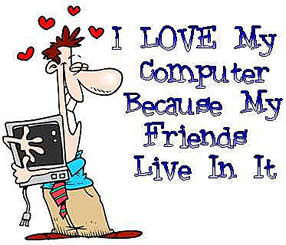Maybe, maybe not.
I’ve been thinking about this topic for the past week or so. For some reason, it keeps coming up in conversation, and I keep running across discussions about blogging / social media policies while I’m reading about related topics.
Paul Dunay did a survey with a question about blogging policies and found that 63% of companies surveyed did not have a formal policy in place regarding employee blogs. As an aside, please notice that only 86 people responded to this question and his research does not include any demographic or research methodology data, so I would be cautious about using this data to make any significant decisions. With that said, it got me thinking about whether blogging policies were important or not. He also suggested in his analysis that it might be better to think of social media policies, rather than limiting it to blogging policies.
I also ran across one of Jeremiah Owyang’s posts about Social Media Policies from a couple of months ago where he suggests leveraging and building on the existing ethics policies while trusting employees to do the right thing.
In my experience, stringent rules and regulations encourage people to find ways to work around them. When companies come up with big lists of specific do’s and don’ts, too many employees use them as an excuse to skirt the rules (well, they didn’t say that I couldn’t do x, y, z). Broad guidelines based on good practices might be a better way to go. When I worked at Intel, we had frequent ethics training, and I remember an instructor saying that most things could be decided by thinking about the following 2 questions:
- Would I want my mother to know that I did this?
- Would I be embarrassed if I read about it on the front page of the Wall Street Journal?
As far as I am concerned, that just about covers it for me 🙂
It seems like quite a few companies go with a list of rules and regulations approach. While social media policies of the rules and regulations variety may not be the best way to encourage participation in social media sites, some social media guidelines for your employees might be a good start. The guidelines should cover blogging, podcasting, comments, Facebook, Twitter, and other social sites. I would keep the list of guidelines short and broad with a focus on helping employees participate in social media rather than restricting them to a list of “approved” activities. Again, this is not intended to be a list of rules and regulations.
Here are a few things you might want to include in your company’s social media guidelines for participation:
- Be authentic, honest and conversational in your posts. Leave the marketing speak and press release format for other parts of the website.
- Use good judgment about content and be careful not to include confidential information about your company, customers, or vendors.
- Listen to people and respond to as many comments as possible with constructive feedback. Allow negative comments (delete the spam) – the key to managing comments is to respond rather than censor. Avoid getting defensive and ignore the trolls where appropriate.
- When you talk about your company or competitors, do so under your real name making your alliance with your company clear (no company wants a repeat of the Whole Foods message board fiasco). If you are providing your opinion, it is also a good idea to make sure people know that you are giving your opinion.
- Peer reviews, especially for lengthy or complicated posts, should be encouraged, but not required. It’s always nice to have someone double check grammar and technical details before it goes out to the world.
- Personal blogs for employees should be encouraged. They are a great way to show the world that you hire smart, interesting people.
A few things that you might not want to include in your social media policy:
- Lengthy approval processes for content. They not only stifle creativity and spontaneity, but they can also render many posts obsolete. Social media often requires quick, short responses to questions, trends, and issues. You want your employees to be involved in those discussions as they happen, not days or even hours later.
- Restrictions about who is allowed to participate and who is not. Assuming that you hire great people, you should be able to provide employees with guidelines to participate and trust them to do the right thing. If someone isn’t playing nicely with others online, it should be addressed as part of a broader performance management plan with that specific employee.
I also have several other posts on similar topics about best practices for blogging and participating in social sites:
- Starter Kit: Social Media and Social Networking Best Practices for Business
- Corporate Blogging Tips
- Are Corporate Blogs a Joke?
- Why Companies Should Have Online Communities
This is not meant to be an exhaustive list, and it probably wouldn’t work for every company; however, I do think it provides an interesting starting point and approach for working with employees to help them participate in social media (rather than restricting them from participating).
What do you think is important to have in a corporate social media policy?

